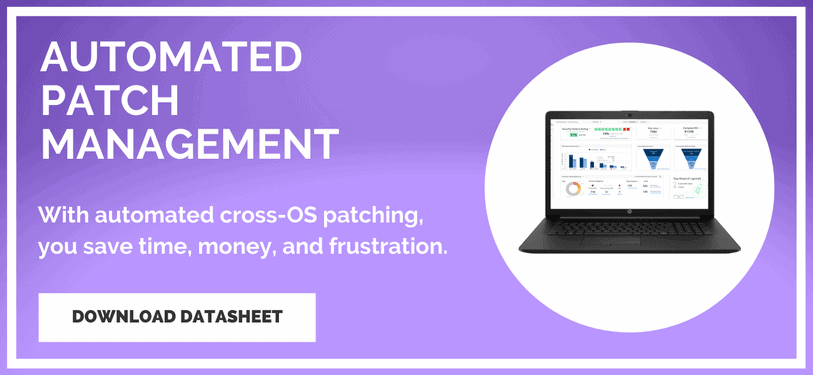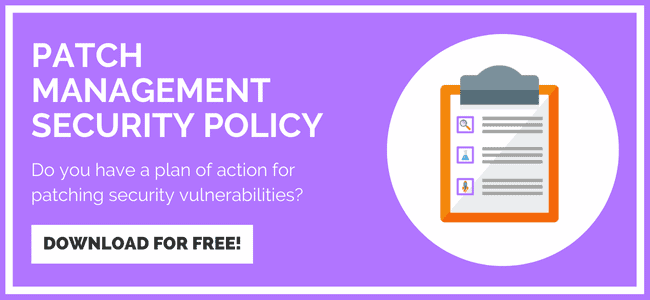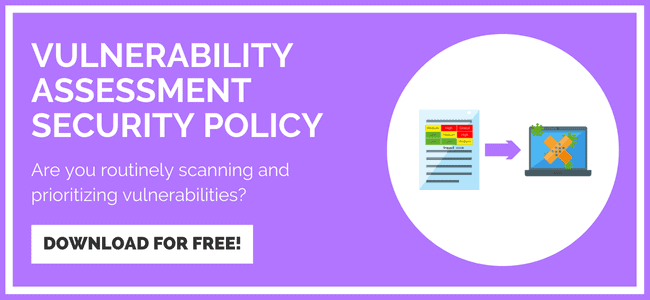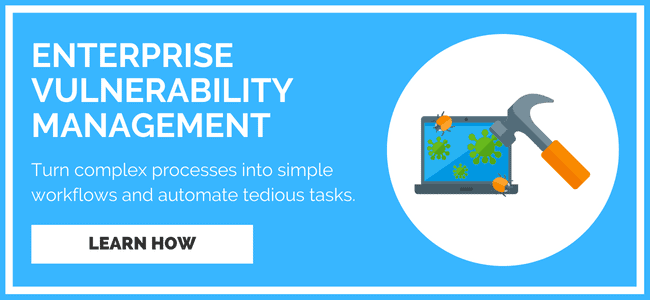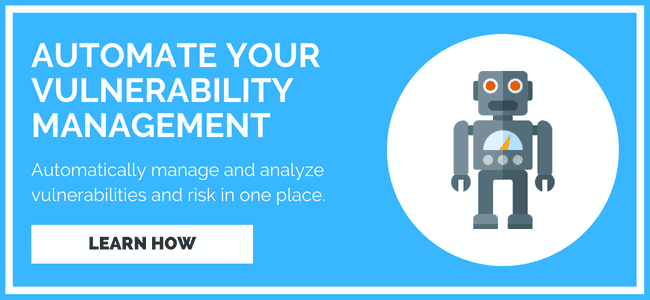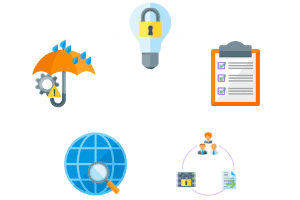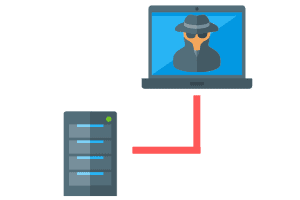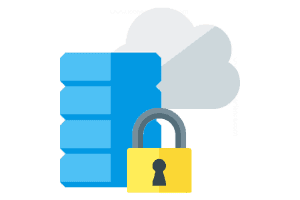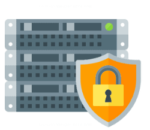Previous
What Is Vulnerability Management?
A Complete Guide For 2023
Learn about PurpleSec’s fully managed vulnerability management services.
Author: Michael Swanagan, CISSP, CISA, CISM / Last Updated: 03/10/2023
Reviewed By: Josh Allen & Rich Selvidge, CISSP
View Our: Editorial Process
Table Of Contents
Vulnerability management is the process of identifying, prioritizing, and mitigating vulnerabilities in an organization’s systems and networks to reduce the risk of cyber attacks and protect against potential threats.
What You’ll Learn
- What vulnerability management is and how it works.
- The different components that make up the vulnerability management process.
- The top vulnerabilities in 2022 and how they were fixed.
- Our predictions for vulnerability management in 2023.
Managing vulnerabilities continues to be a struggle for many organizations today. It’s not enough to ‘check the box’ and say we have a tool that does vulnerability scanning without actively addressing the report details.
Hackers are now targeting specific industries because they know which sectors are prone to their attacks.
A recent report found 22,514 vulnerabilities were reported in 2022, which was the highest reported since 2009. These statistics highlight the importance of having a vulnerability management program for your organization.
In this article, I will review the core components and benefits of an efficient vulnerability management program. I’ll also highlight the importance of continuously automating your scan processes to stay ahead of the game in 2023.
Let’s begin by defining what vulnerability management is, and where it fits into the overall management process of your cyber security program.
What Is Vulnerability Management?
Vulnerability Management is the continuous process of discovering, assessing, verifying, prioritizing, remediating, and reporting vulnerabilities in systems and software.
The process of vulnerability management seeks to minimize the probability of exposures to threats that may impact the availability of critical business systems.
Vulnerability management is an integral component of your security program.
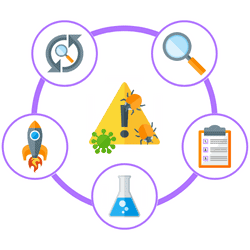
Treating vulnerability management as part of your security program creates synergy with other security systems to help you adapt to the constantly changing threat and attack landscape.
Building out a vulnerability management process can be achieved by understanding the various components that comprise the program. Let’s take a look at the components in the next section.
Components of Vulnerability Management
The components of vulnerability management are separate processes that are handled by the overall vulnerability management program. To illustrate, note the sample chart below that describes each component.
| Process | Responsibility | Duration | Frequency | Cost | Tools |
|---|---|---|---|---|---|
| Vulnerability Scanning | Security Team – Analyst or Engineer | 1-2 hours to setup and 1-2 hours to scan. | Ideally daily or weekly at a minimum. | $5,000+ /year | Qualys, Rapid7, Acunetix, Nessus, Managed Engine |
| Vulnerability Assessment | Security Team – Analyst or Engineer | 3-5 hours of report writing. | Once per week or once per month. | $2,500 – $10,000 /year | Imperva Nmap Burpsuite Inviciti OpenVAS |
| Patch Management | Infrastructure teams usually manage along with business owner approval | Usually 24 – 48 hours | At least weekly, ideally daily. | $5-$10 per endpoint | Microsoft SCCM Avast Kaseya NinjaOne Atera |
| Vulnerability Remediation | Shared responsibility, including infrastructure teams and involves business support team. | 30 days at a minimum; ideally every 9 – 12 days | At least weekly, ideally daily. | $5-$10 per endpoint | PurpleSec |
Let’s now define each process and how they fit together into the scope of a comprehensive vulnerability management strategy.
Vulnerability Scanning
Vulnerability scanning can be described as the act of performing an inspection of internal/external addresses or assets managed by the organization.
This inspection includes:
- Scanning external websites/applications
- Network port scans
- Internal servers
- IoT Devices
- Cloud Services
Related Resources:
Vulnerability Assessment
Vulnerability Assessments are periodic reviews of security weaknesses detected in an information endpoint or application.
The detection report provides a detailed review of a system’s susceptibility to an exploit and assigns a category ranking.
The assessment also provides guidance on how to remediate the finding.
Learn More: How To Conduct A Vulnerability Assessment
Patch Management
If you were to compare vulnerability management and patch management, patch management operationalizes the effort in applying patches to a system, and is a component of vulnerability management.
Vulnerability Remediation
A vulnerability remediation process determines and addresses weaknesses in assets, systems, or applications. The remediation process is driven by the Service Level Agreement (SLA) as documented in your Vulnerability Management policy.
This is an essential component since it established the timeliness of remediation and establishes ongoing vulnerability remediation best practices.
Now that we have discussed the basic foundational components of vulnerability management best practices, let’s now review the key benefits of putting this all together to round out the program.
Benefits of Vulnerability Management
If your organization does not have a robust vulnerability management program, your organization is at risk of cyber attacks that may threaten the availability of your business systems.
To counter this risk, let’s take a look at the 3 core benefits of vulnerability management.
One of the key steps in managing vulnerabilities in the cloud is defining the key vulnerability management metrics for your environment.
In this section, we will walk through the steps to establish key metrics and how you can prepare to stay current on monitoring threats to your cloud systems.
Improved Security Posture
Vulnerability management enhances the overall security posture of your organization by providing visibility and recognition of on premise and key external web assets.
Reduced Risk of Cyber Attacks
Implementing an automated and continuous patch management process ensures immediate identification of vulnerabilities, sets prioritization and allocates resources to remediate critical vulnerabilities, which in turn reduces the risk of cyber-attacks.
Maintain Compliance Requirements
Effective vulnerability management will help your organization to achieve regulatory compliance.
Compliance frameworks such as the Payment Card Industry (PCI) and the Health Insurance Portability and Accountability Act (HIPAA) require organizations to maintain a vulnerability management program.
Now that we understand the core benefits of the Vulnerability Management program, let’s now explore another key component, the Vulnerability Management policy.
Importance Of Having A Vulnerability Management Policy
As explained, the main benefits of the vulnerability management program is to secure the network from threats, improve your organizations security posture, and stay compliant with regulatory requirements.
But how do you ensure teams that the program is communicated and enforced? The answer is a Vulnerability Management Policy.
The purpose of the policy is to provide guidance not only for your security teams, but to establish a standard set of processes that explains in detail each component of the program.
Details that should be included in the policy:
- Asset identification – Describes the assets that are in scope for scanning.
- Vulnerability scan frequency – Defines how often the scans are conducted.
- SLA (Service Level Agreement – Defines the times frames vulnerabilities should be remediated.
- Exception process – Describes the criteria and approval process for vulnerabilities that cannot be remediated in a timely manner.
Top Vulnerabilities In 2022
The top vulnerabilities of 2022 impacted systems and devices that all businesses use daily. Note the risk and how they could potentially impact business operations if left unpatched.
Log4Shell (CVE-2021-44228)
Log4Shell is a vulnerability in the logging component of the Apache Tomcat server software. It was discovered in December of 2021 and allowed attackers to execute arbitrary code on the server by sending a specially crafted request. The vulnerability was patched in a later version of Tomcat, but many systems remained unpatched and were at risk.
Follina (CVE-2022-30190)
Follina is a vulnerability in the popular web framework Ruby on Rails. It was discovered in 2022 and allowed attackers to execute arbitrary code on the server by sending a malicious request. The vulnerability was patched in a later version of Ruby on Rails, but many systems remained unpatched and were at risk.
Spring4Shell (CVE-2022-22965)
Spring4Shell is a vulnerability in the Spring framework, which is a popular Java-based web application framework. It was discovered in 2022 and allowed attackers to execute arbitrary code on the server by sending a malicious request. The vulnerability was patched in a later version of Spring, but many systems remained unpatched and were at risk.
Future Trends and Predictions for Vulnerability Management in 2023
Based on trends from 2022, the prevalence of threats and vulnerabilities exploited in the wild is not slowing down.
To stay ahead of the attacks, security leaders are looking for innovative solutions to continuously monitor the networks and minimize risk with tighter budgets.
Let’s explore a few emerging technologies that will impact the way your organization approaches vulnerability management in 2023 and in the future.
Continue Reading: Vulnerability Management Trends & Predictions For 2023
Automation Of Vulnerability Management Processes
Automating vulnerability management that incorporates machine learning algorithms is one method security teams can implement to continuously identify and evaluate threats. This level of scanning increases efficiency and reduces technical debt by automating remediation.
Continuous Vulnerability Monitoring
As the name implies, continuous involves regularity and consistency. Continuous vulnerability scanning allows for creative scheduling and ongoing discovery of threats.
The output of continuous scanning produces valuable reports that provide real time information on vulnerabilities and threats that exist in your infrastructure.
This approach allows your organization to develop a continuous vulnerability management solution that reduces overall risk to your environment.
Managing Vulnerabilities In The Cloud
Managing vulnerabilities in the cloud involves ensuring that cloud-based systems are regularly updated and patched, as well as monitoring for new vulnerabilities and implementing appropriate controls to mitigate risks.
Knowledge of applying best practices for managing vulnerabilities in the cloud is necessary to ensure assets are properly identified for scanning.
Once the infrastructure is established for cloud scanning, the procedures and vulnerability policies can be enforced as usual.
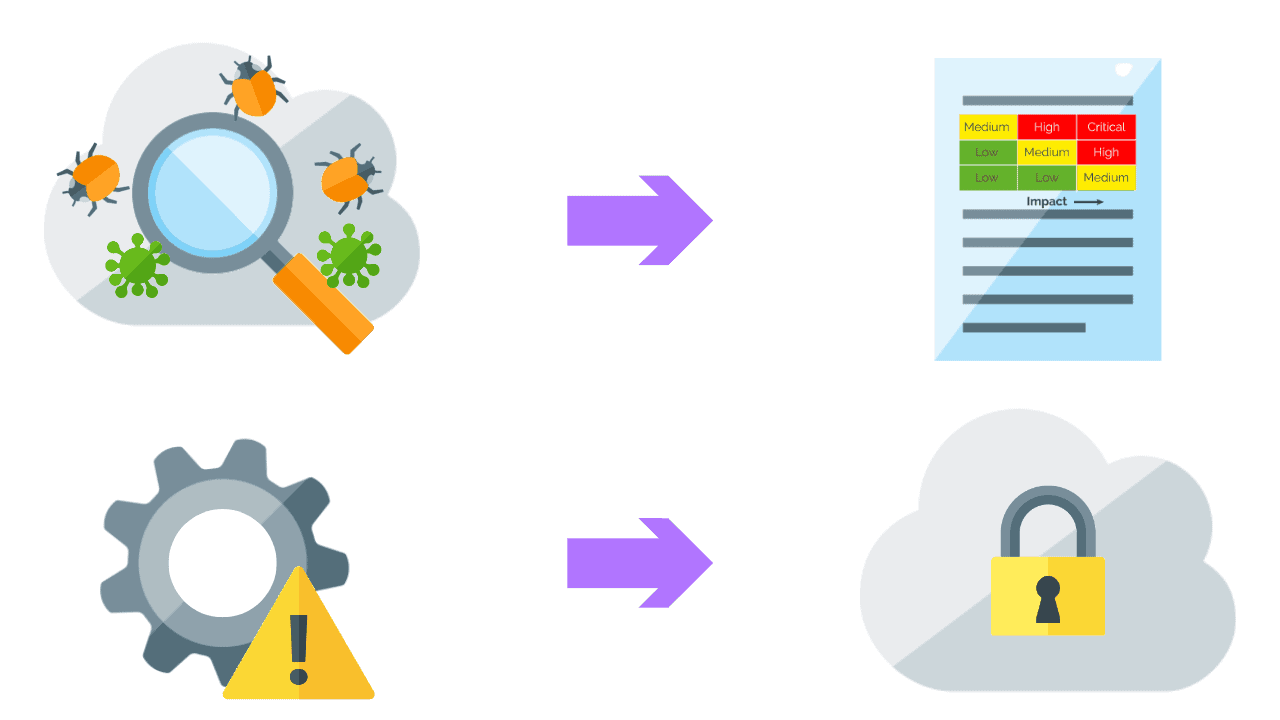
Focus On Cyber Resilience
Cyber resilience refers to an organizations ability to prepare and recover quickly from an attack in order to continue operating in the face of ongoing threats.
When an organization focuses on cyber resilience, it will identify the most critical applications that have the highest business impact.
The organization can then leverage the vulnerability management program to prioritize scanning on these systems to proactively identify potential threats, which in turn establishes the foundation for a risk-based vulnerability management process for your organization.
Wrapping Up
In this article, we have described the various components of an efficient vulnerability management program.
We reviewed how each component integrates into the scope of the overall vulnerability program. As we head into 2023, we took a step back and reviewed the top vulnerabilities exploited in 2022.
We also emphasized the importance of adopting automation and machine learning into your scanning processes.
Lastly, we reviewed the importance of managing vulnerabilities in the cloud along with the benefits of implementing cyber resilience, which is an effective technique when coupled with a continuous vulnerability management process.
As we look forward to another exciting and challenging year, continue to be vigilant in protecting your systems by implementing and maintaining an efficient vulnerability management program that secures your organization in 2023.

Michael Swanagan, CISSP, CISA, CISM
Michael is an IT security expert with 15 years of proven experience. He has experience leading and supporting security projects and initiatives in the healthcare, finance, and advertising industry.
Recent Articles
Categories
Policy Templates
Most Popular

